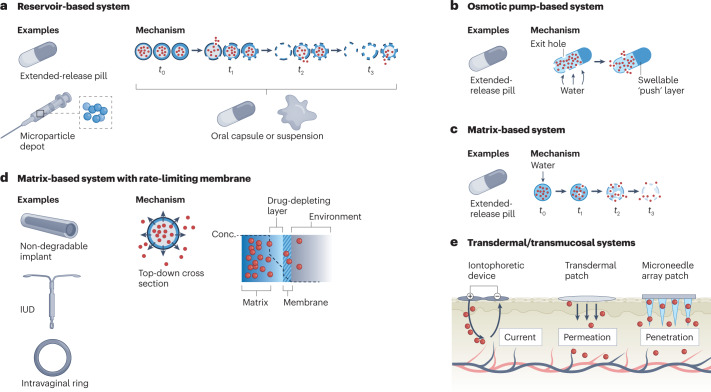Fig. 3. Mechanisms of release and examples of common drug delivery systems.
a, Reservoir-based systems. These consist of a hollow, drug-filled core encapsulated by a degradable polymer. Over time, the polymeric shell degrades in a composition and thickness-dependent manner to release the drug. Using multiple types of shell allows for a fraction of the drug to release at a certain time. This technology can be used in capsules or as part of a microparticle depot suspension in oral and parenteral delivery systems, respectively. b, Osmotic pump-based systems. These systems are often used for extended-release oral delivery and consist of a water-permeable, insoluble polymer laden with drug and, often, a so-called expandable ‘push’ layer encapsulated in a hard coating. Exit holes are drilled through the coating to expose the polymer to the outside. Over time, water infiltrates the capsule and causes both layers to expand, pushing drug out through the exit holes. c, Matrix-based systems. These systems consist of drug embedded within a water-permeable, soluble monolithic matrix. Over time, water infiltrates the matrix (often, in the form of a tablet) and causes it to degrade, enabling drug release. These types of system are most often used in extended-release oral formulations. d, Matrix-based systems with a rate-limiting membrane. These consist of a drug-laden matrix core surrounded by a semi-permeable membrane that limits the rate of drug release, enabling pseudo zero-order delivery. This technology is often found in non-degradable, long-lasting implants, such as intrauterine devices (IUDs) and intravaginal rings. e, Transdermal/transmucosal systems. The three types of system shown here are iontophoretic devices, transdermal patches and microneedle array patches. Iontophoretic devices achieve delivery by creating an electric field that efficiently shuttles charged moieties across the skin barrier. Transdermal patches allow for passive delivery of molecules smaller than 500 Da. Finally, microneedle array patches penetrate the skin to deliver drug directly into the cutaneous layer.

